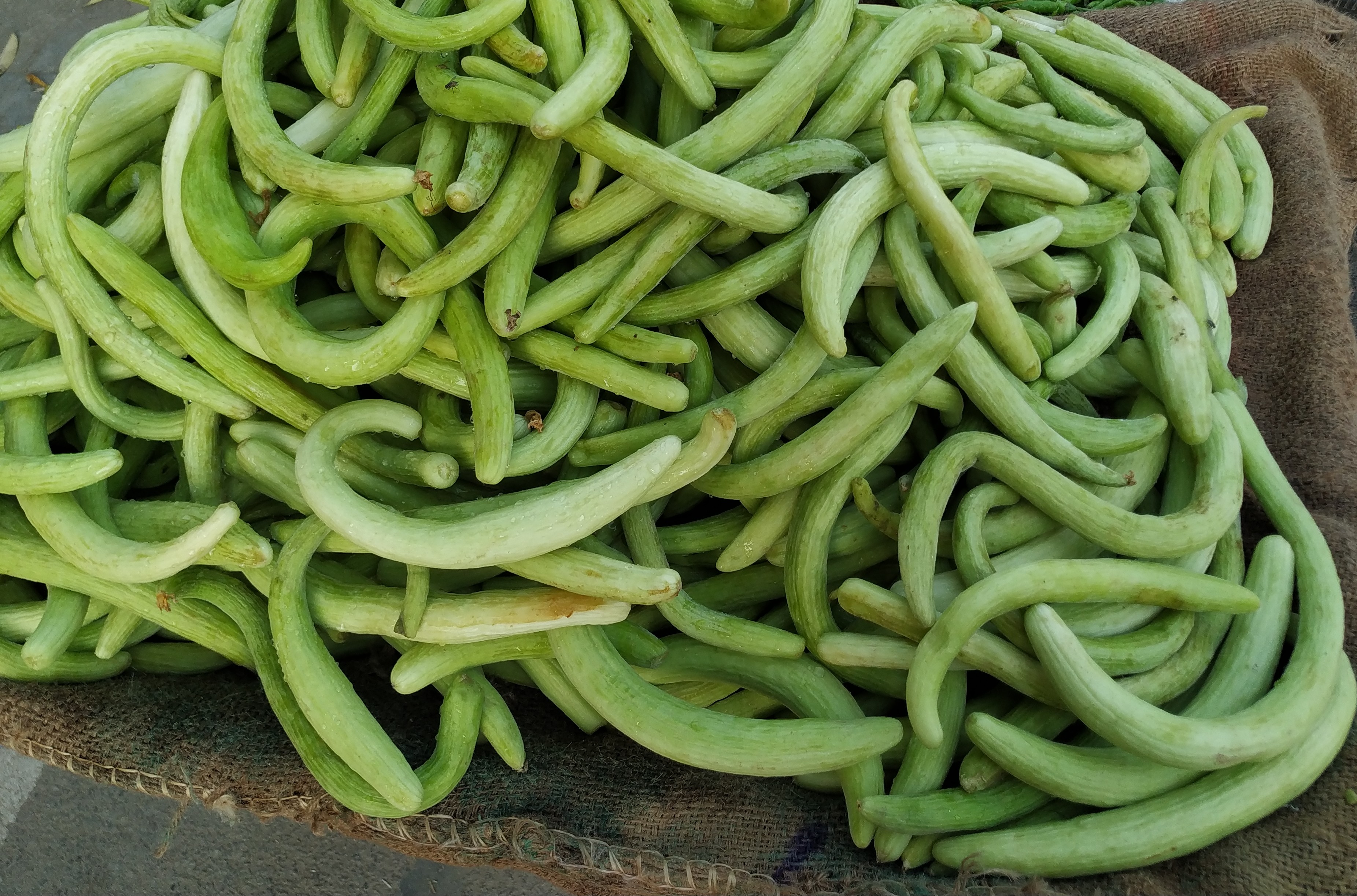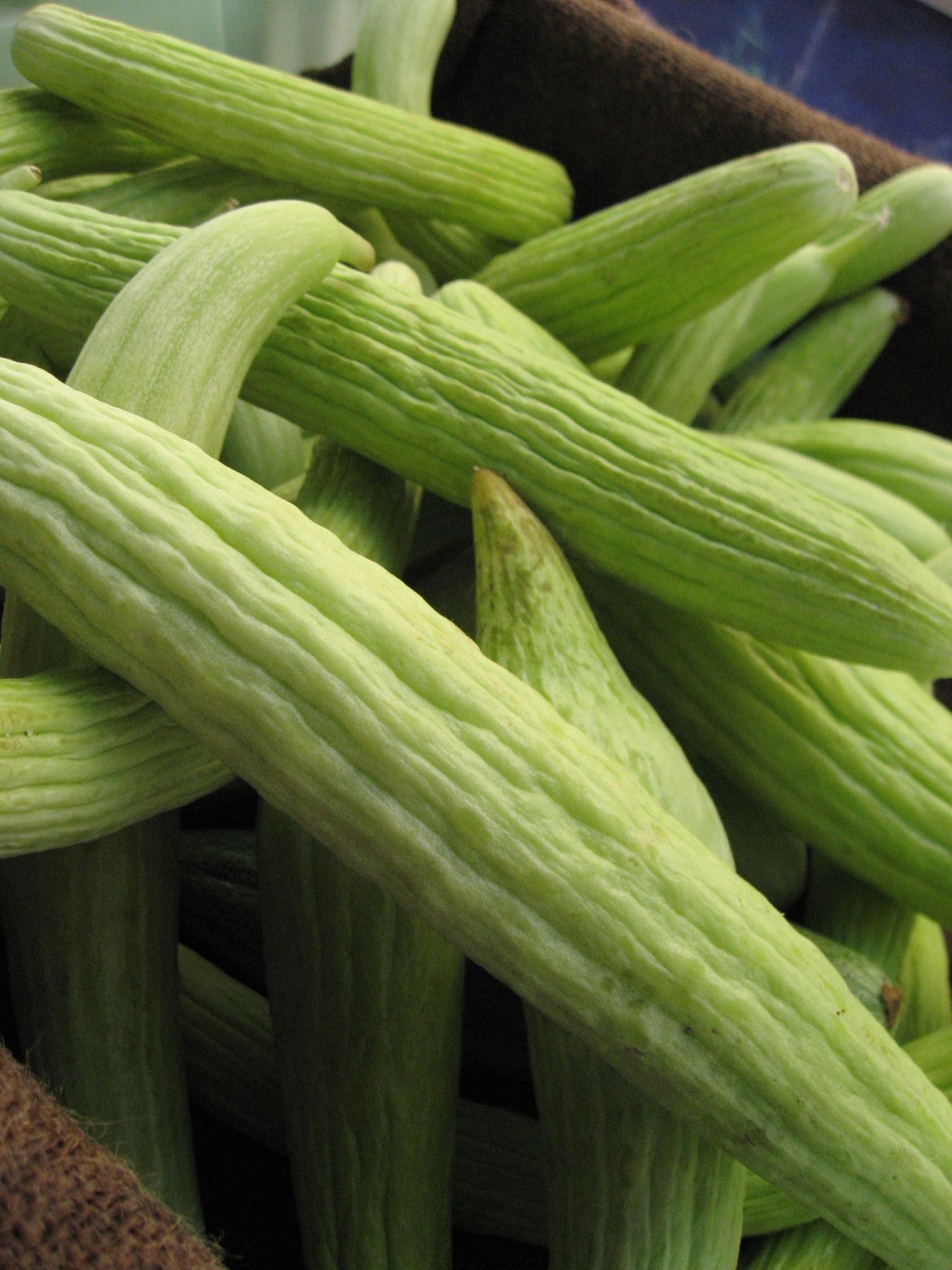Snake Melon on:
[Wikipedia]
[Google]
[Amazon]
The Armenian cucumber, ''Cucumis melo'' Flexuosus Group or ''Cucumis melo'' var. ''flexuosus'', is a type of long, slender fruit which tastes like a 
 The Armenian cucumber grows approximately long. It grows equally well on the ground or on a trellis. The plants prefer to grow in full sun for most of the day. The fruit is most flavorful when it is long. Pickled Armenian cucumber is sold in Middle Eastern markets as "pickled wild cucumber".
The Armenian cucumber grows approximately long. It grows equally well on the ground or on a trellis. The plants prefer to grow in full sun for most of the day. The fruit is most flavorful when it is long. Pickled Armenian cucumber is sold in Middle Eastern markets as "pickled wild cucumber".
Plants for a Future database
*
Fact sheet from the University of Florida (with photo)
{{Taxonbar, from=Q2139088 Cucurbitoideae Fruit vegetables Flora of Armenia Flora of Azerbaijan Flora of Turkey Taxa named by Carl Linnaeus
cucumber
The cucumber (''Cucumis sativus'') is a widely-cultivated creeping vine plant in the family Cucurbitaceae that bears cylindrical to spherical fruits, which are used as culinary vegetables.true melon
''Cucumis melo'', also known as melon, is a species of ''Cucumis'' that has been developed into many cultivated varieties. The fruit is a pepo. The flesh is either sweet or bland, with or without an aroma, and the rind can be smooth (such as ho ...
(''C. melo''), a species closely related to the cucumber (''C. sativus''). It is also known as the yard-long cucumber, snake cucumber, snake melon, in Armenian, in Persian, in Semnani,
in Japanese, in Turkish, in Hindi, in Punjabi, in Arabic, or in Italian. It should not be confused with the snake gourd
''Trichosanthes cucumerina'' is a tropical or subtropical vine. Its variety ''T. cucumerina'' var. ''anguina'' raised for its strikingly long fruit. In Asia, it is eaten immature as a vegetable much like the summer squash and in Africa, the red ...
s (''Trichosanthes'' spp.). The skin is very thin, light green, and bumpless. It has no bitterness and the fruit is almost always used without peeling. It is also sometimes called a ''gutah''.

Description
 The Armenian cucumber grows approximately long. It grows equally well on the ground or on a trellis. The plants prefer to grow in full sun for most of the day. The fruit is most flavorful when it is long. Pickled Armenian cucumber is sold in Middle Eastern markets as "pickled wild cucumber".
The Armenian cucumber grows approximately long. It grows equally well on the ground or on a trellis. The plants prefer to grow in full sun for most of the day. The fruit is most flavorful when it is long. Pickled Armenian cucumber is sold in Middle Eastern markets as "pickled wild cucumber".
History
Fredric Hasselquist, in his travels inAsia Minor
Anatolia (), also known as Asia Minor, is a peninsula in West Asia that makes up the majority of the land area of Turkey. It is the westernmost protrusion of Asia and is geographically bounded by the Mediterranean Sea to the south, the Aegean ...
, Egypt
Egypt ( , ), officially the Arab Republic of Egypt, is a country spanning the Northeast Africa, northeast corner of Africa and Western Asia, southwest corner of Asia via the Sinai Peninsula. It is bordered by the Mediterranean Sea to northe ...
, Cyprus
Cyprus (), officially the Republic of Cyprus, is an island country in the eastern Mediterranean Sea. Situated in West Asia, its cultural identity and geopolitical orientation are overwhelmingly Southeast European. Cyprus is the List of isl ...
and Syria
Syria, officially the Syrian Arab Republic, is a country in West Asia located in the Eastern Mediterranean and the Levant. It borders the Mediterranean Sea to the west, Turkey to Syria–Turkey border, the north, Iraq to Iraq–Syria border, t ...
in the 18th century, came across the "Egyptian or hairy cucumber, ''Cucumis chate''", commonly known today in Egypt as "atta" (classical قِثَّاء or قُثَّاء (qiṯṯāʾ or quṯṯāʾ). It is today included in the Armenian variety. It is said by Hasselquist to be the “queen of cucumbers, refreshing, sweet, solid, and wholesome.” He also states “they still form a great part of the food of the lower-class people in Egypt serving them for meat, drink and physic.” George E. Post, in ''Hastings' Dictionary of the Bible
''Hastings' Dictionary of the Bible'' was a five-volume Biblical encyclopaedia published 1898–1904.
First edition
The full title was ''A Dictionary of the Bible, dealing with the Language, Literature and Contents, including the Biblical Theology ...
'', states, “It is longer and more slender than the common cucumber, being often more than a foot long, and sometimes less than an inch thick, and pointed at both ends.”
As indicated by images from Roman
Roman or Romans most often refers to:
*Rome, the capital city of Italy
*Ancient Rome, Roman civilization from 8th century BC to 5th century AD
*Roman people, the people of Roman civilization
*Epistle to the Romans, shortened to Romans, a letter w ...
times, ''C. melo'' subsp. ''melo'' Chate Group had been the stem from which longer fruits were selected very early, hence both the ''qishu’im'' of 10th to 6th century BC Israel
Israel, officially the State of Israel, is a country in West Asia. It Borders of Israel, shares borders with Lebanon to the north, Syria to the north-east, Jordan to the east, Egypt to the south-west, and the Mediterranean Sea to the west. Isr ...
and the ''cucumis'' of the 1st century CE Roman writers Columella
Lucius Junius Moderatus Columella (, Arabic: ) was a prominent Roman writer on agriculture in the Roman Empire.
His in twelve volumes has been completely preserved and forms an important source on Roman agriculture and ancient Roman cuisin ...
and Pliny were mostly ''C. melo'' subsp. ''melo'' Flexuosus Group. These vegetable melons are by far the cucurbit most frequently encountered in ancient Mediterranean images and texts, and hence must have been a widely grown and esteemed crop.
According to Pliny the Elder
Gaius Plinius Secundus (AD 23/24 79), known in English as Pliny the Elder ( ), was a Roman Empire, Roman author, Natural history, naturalist, and naval and army commander of the early Roman Empire, and a friend of the Roman emperor, emperor Vesp ...
, the Emperor Tiberius
Tiberius Julius Caesar Augustus ( ; 16 November 42 BC – 16 March AD 37) was Roman emperor from AD 14 until 37. He succeeded his stepfather Augustus, the first Roman emperor. Tiberius was born in Rome in 42 BC to Roman politician Tiberius ...
had the cucumber on his table daily during summer and winter. In order to have it available for his table every day of the year, the Romans reportedly used artificial methods of growing (similar to the greenhouse system), whereby mirrorstone refers to Pliny's lapis specularis, believed to have been sheet mica.James, Peter J.; Thorpe, Nick; Thorpe, I. J. (1995). "Ch. 12, Sport and Leusure: Roman Gardening Technology". Ancient Inventions. Ballantine Books. p. 563. ISBN 978-0-345-40102-1
"Indeed, he was never without it; for he had raised beds made in frames upon wheels, by means of which the cucumbers were moved and exposed to the full heat of the sun; while, in winter, they were withdrawn, and placed under the protection of frames glazed with mirrorstone."
— Pliny the Elder, Natural History XIX.xxiii, "Vegetables of a Cartilaginous Nature—Cucumbers. Pepones"
Reportedly, they were also cultivated in specularia, cucumber houses glazed with oiled cloth. Pliny describes the Italian fruit as very small, probably like a gherkin. He also describes the preparation of a medication known as elaterium. However, some scholars believe that he was instead referring to ''Ecballium elaterium
''Ecballium'' is a genus of flowering plants in the family Cucurbitaceae containing a single species, ''Ecballium elaterium'', also called the squirting cucumber, as well as the noli me tangere and its English translation touch-me-not. Its unus ...
'', known in pre-Linnean times as ''Cucumis silvestris'' or ''Cucumis asininus'' ('wild cucumber' or 'donkey cucumber'), a species different from the common cucumber. Pliny also writes about several other varieties of cucumber, including the cultivated cucumber,Pliny the Elder, Natural History XX.iv-v and remedies from the different types (9 from the cultivated; 5 from the "anguine;" and 26 from the "wild").
Charlemagne had ''Cucumis'' grown in his gardens in the 8th/9th century.
References
External links
Plants for a Future database
*
Fact sheet from the University of Florida (with photo)
{{Taxonbar, from=Q2139088 Cucurbitoideae Fruit vegetables Flora of Armenia Flora of Azerbaijan Flora of Turkey Taxa named by Carl Linnaeus